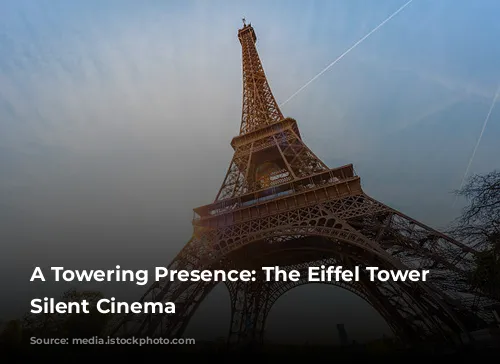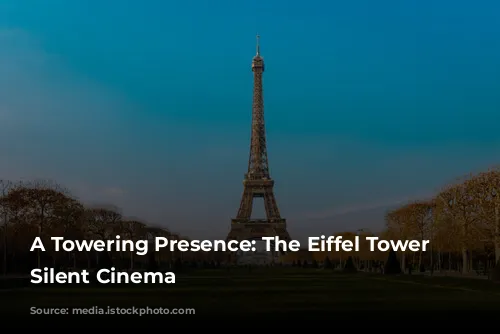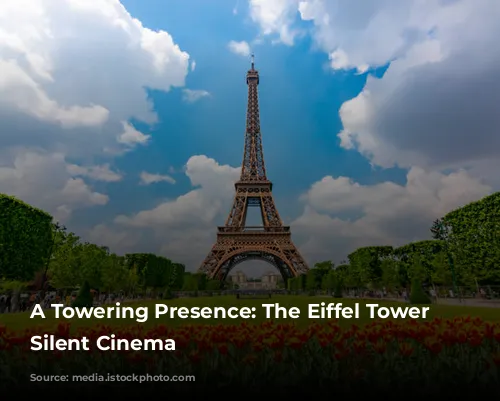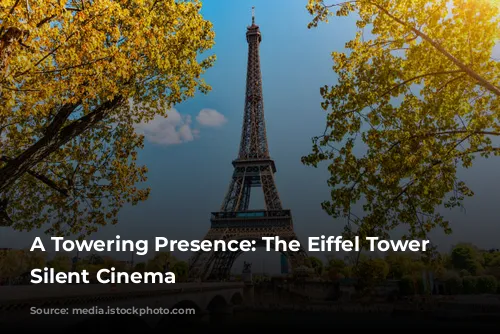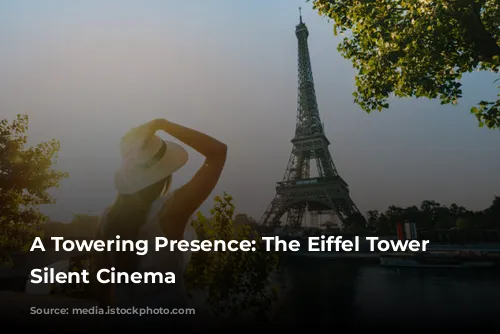Imagine a world before talkies, a world where images danced silently on screen, captivating audiences with their sheer visual storytelling. This was the era of silent cinema, and at its heart, a monument stood tall: the Eiffel Tower. While many know the tower’s influence on painters and poets, its impact on silent films has largely been overlooked.
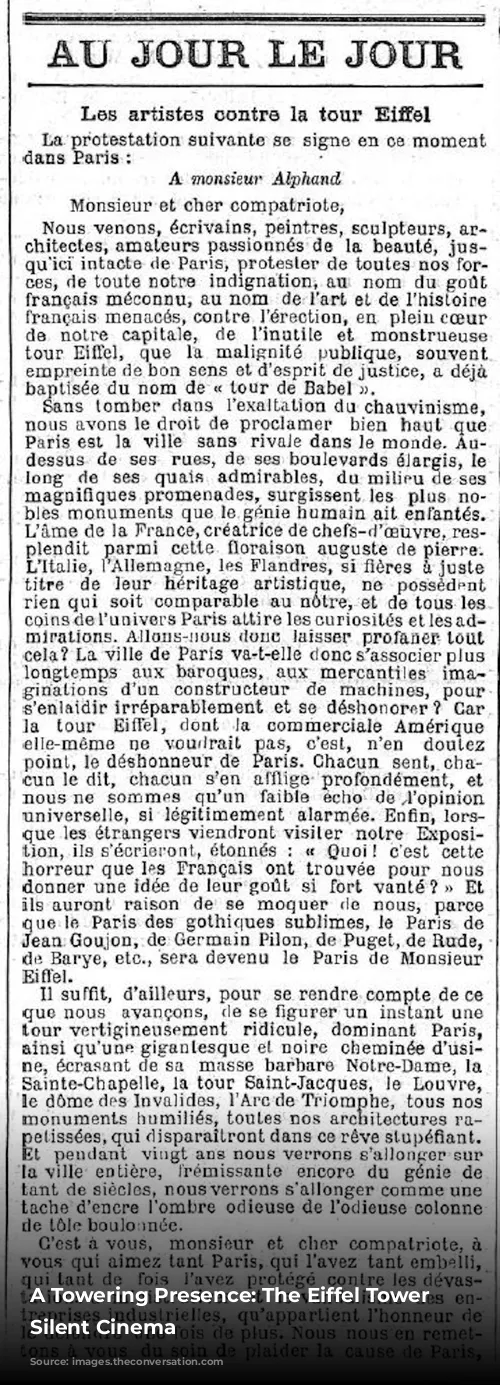
A New Medium Embraces the Iron Lady
The cinematograph, a new technology born in 1895, just six years after the Eiffel Tower’s construction, was quickly drawn to the towering structure. It seems almost natural that this innovative medium would capture the iconic landmark. Records reveal that the “Eiffel Tower” appears in 121 film entries between 1895 and the dawn of talkies in France, out of a total of 2,091 films. This is a significant number, especially considering that many films from this period have been lost due to the fragility of the early cellulose nitrate film stock.
One of the earliest recorded instances of the tower on film is a 1987 Lumière brothers production, filmed from the tower’s lift, offering a vertiginous 42-second panorama of the Trocadero Palace with the Eiffel Tower dominating the foreground. The Lumières, renowned for capturing iconic landmarks, took this captivating shot a step further, creatively superimposing foreground and background shots to draw viewers into the scene.
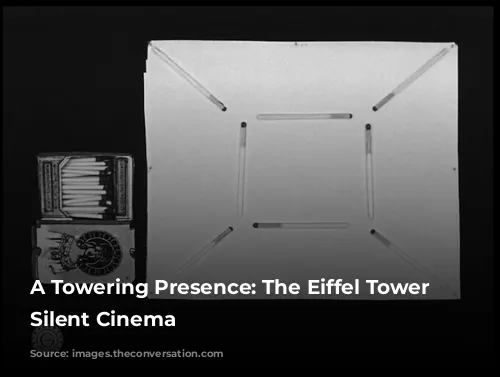
Beyond the Iconic: The Eiffel Tower in Fiction
The tower’s presence extends beyond documentary footage. Georges Méliès, famed for his fairy tales and trick films, included the Eiffel Tower in several of his Parisian-themed films. He captured the Champ-de-Mars and the tower during the 1900 Universal Exhibition, incorporating it into his fantastical world.
The Lumières, always pushing boundaries, attempted an ambitious project in 1900. They envisioned projecting a film onto a colossal 720 square meter screen during the Universal Exhibition – a feat that would dwarf even the largest screen in Europe today! Unfortunately, the necessary projector wasn’t completed in time, leaving this ambitious dream unrealized.
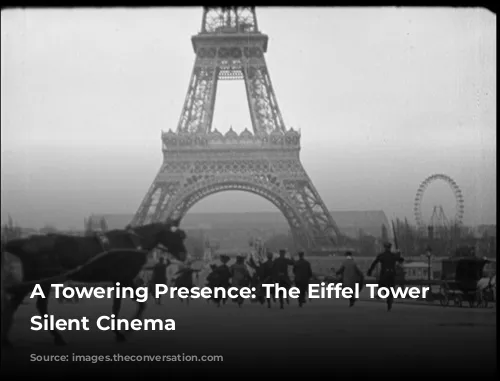
A Towering Presence in Comedy, Animation, and Beyond
The Eiffel Tower’s presence in cinema was not confined to grand spectacles. It found its way into comedic narratives as well. In 1906, Georges Hatot’s “La Course à la Perruque” (“The Wig Chase”) featured a chase sequence that whisked viewers both outside and inside the tower.
Even the burgeoning world of animation embraced the tower. Émile Cohl, a pioneer of the art form, created “Les Beaux-Arts Mystérieux” (“The Mysterious Fine Arts”) in 1910. This inventive film, crafted frame by frame, utilized matches to depict the Eiffel Tower’s structure, showcasing the tower’s unique appeal in the imaginative world of animation.
The Eiffel Tower’s allure continued to captivate filmmakers. In 1923, René Clair, a young filmmaker connected to the avant-garde, filmed “Paris qui dort” (“The Crazy Ray”). Set primarily within the Eiffel Tower, this film portrays a fantastical scenario where the city’s inhabitants vanish, leaving the monument standing amidst an empty Paris. Clair returned to the tower five years later with “La Tour” (“The Tower”), a 14-minute cinematic poem that showcased the tower from diverse perspectives.
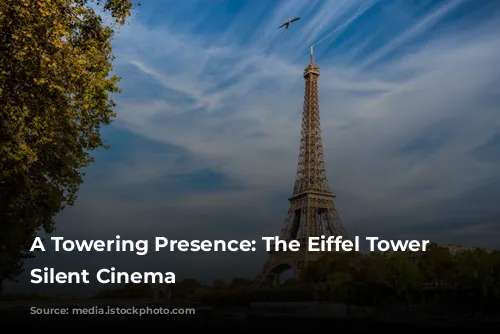
A Monument of Mystery and Intrigue
The Eiffel Tower’s influence extended into the genre of mystery as well. Jean Duvivier’s “Le Mystère de la tour Eiffel” (“The Mystery of the Eiffel Tower”), released during the final years of the silent era, featured the tower as a hub for a shadowy international organization. This film, with its themes of intrigue and coded messages, added a layer of mystery to the monument’s already captivating image.
The Eiffel Tower as a Catalyst for Innovation
These diverse examples showcase how the Eiffel Tower inspired the pioneers of cinema. Whether they used it to illustrate this architectural marvel, to capture the Parisian landscape, or to craft fantastical narratives, filmmakers found new ways to portray the tower’s impact on the city and the human imagination.
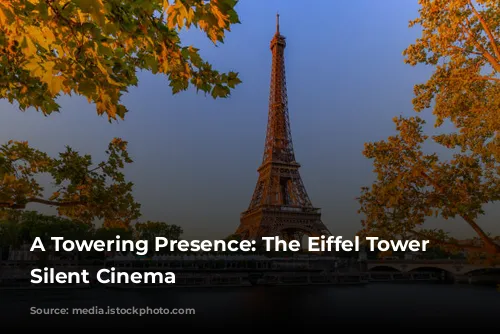
Why the Eiffel Tower’s Cinematic Presence Was Overlooked
The relative obscurity of the Eiffel Tower’s presence in silent cinema stems from the lack of recognition and legitimacy accorded to the cinematographic medium itself.
Early films were fleeting, lasting mere seconds or minutes. They were shown in a variety of locations, from fairgrounds to cafes and even some theaters. This popular form of entertainment, though widely enjoyed, was often dismissed by the elite.
The situation began to shift in 1907 when Pathé, a powerful company, replaced the sale of films with a rental system. This change revolutionized the distribution of films, shaping the way films were produced and consumed. The rise of cinema as an industry led to the emergence of dedicated screening rooms and the production of longer films.
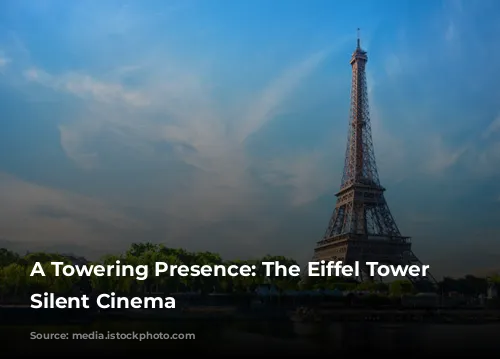
A Silent World, Bursting with Life
The duration of films grew steadily, from 20 meters (60 seconds) in 1907 to 3,000 meters (two hours) by 1913. These longer films were often accompanied by shorter films – newsreels, comedies, animations – and were punctuated by live entertainment, including jugglers, poets, and acrobats. While the films themselves might have been silent, the experience was anything but. The silent cinema was a vibrant and captivating world, with the Eiffel Tower standing tall at its heart.

